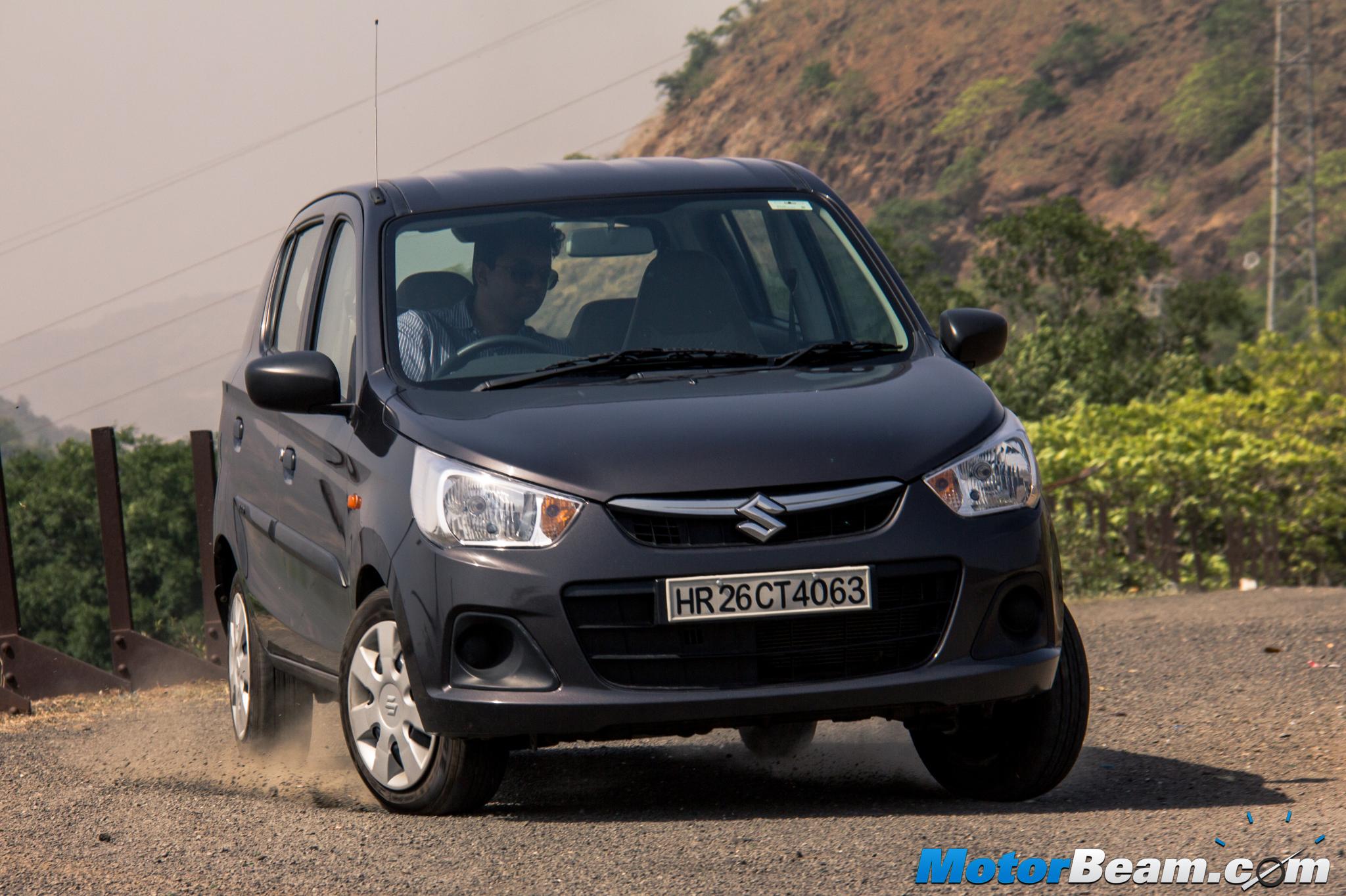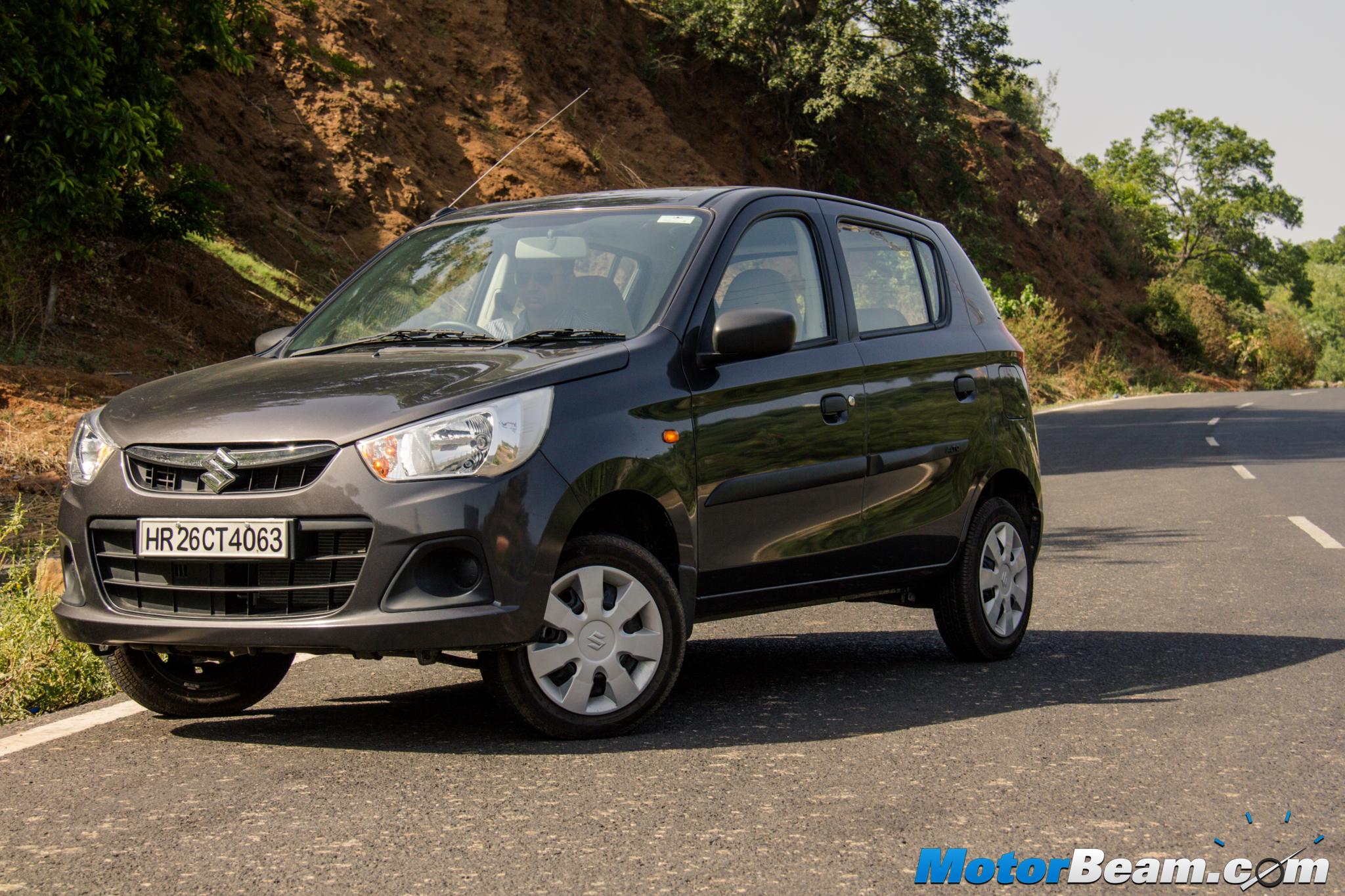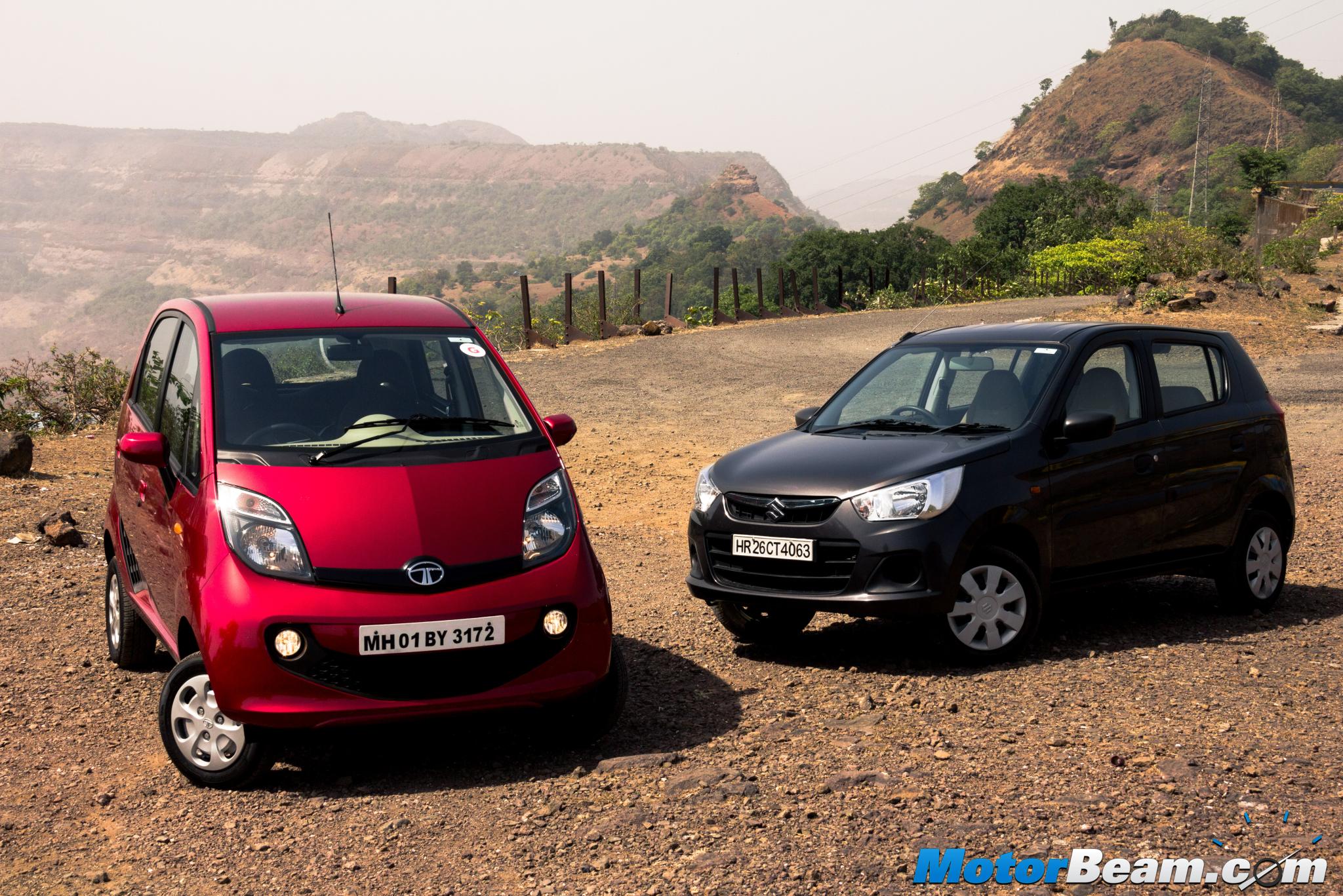
Shootout: Tata Nano GenX vs Maruti Alto K10
Price OTR Mumbai: Rs. 3,56,745/- (Tata Nano GenX AMT), Rs. 4,87,395/- (Maruti Alto K10 AGS)
Small cars they maybe but they come with an automatic gearbox for ease of city driving
Automatic cars are seeing an increase in popularity in India and no longer are automatics only limited to higher segments. In fact, now one can buy even an entry level car with an automatic gearbox, yes, that’s right, the Tata Nano has got an automatic, making it the world’s cheapest automatic car, the said honour rested with the Maruti Alto K10 earlier. These two cars are the cheapest automatics one can buy today and also have quite the price difference between them but since they have no real direct competition to each other, we pitch them against each other in the battle of the most affordable automatic cars!
Motor Quest: The Maruti Alto is India’s top selling car while the Tata Nano doesn’t even feature in the top 20 list of top sellers. The Alto was launched way back in 2000 while the K10 version was launched in 2010, receiving a thorough update last year, while also getting the AMT gearbox. The Tata Nano was launched in 2009 and has got multiple revisions in the past three years, the latest is called GenX.
Both cars look fresh but the current design of the Nano has been seen since long
Styling – Although the Tata Nano is the fresher car as it gets minor cosmetic tweaks in the GenX avatar, it’s really the Maruti Alto K10 which comes across as new. This is because late last year, Maruti gave the Alto K10 a comprehensive update, making it look very different from the previous model. Meanwhile, the Nano has the same basic design as the original model that went on sale last decade, although it has got minor tweaks to the exteriors for a fresher visual appeal. There are some nice design highlights on the Nano, like the blackened headlights with the ‘nano’ engraving, body coloured door handles and outside rear view mirrors, centre mounted antenna (the Alto gets a cheap pull out type) and even foglamps which are shockingly not offered on the automatic variant of the Alto K10.
The Nano’s height is immediately apparent while the Alto K10 is much longer
Both cars get wheel caps and while the Nano is devoid of any chrome, the Alto K10 gets a chrome strip at both the front (grille) and rear (on the tip of the boot lid). In terms of dimensions, the Alto K10 is much longer while the Tata Nano is both wider and taller. In the GenX avatar, the Nano has started to look quite upmarket but the single-wiper blade does make it obvious that this is a budget car. Still, styling doesn’t play a big part for a buyer in this segment and since both cars are average looking, we won’t decide on which one looks better.
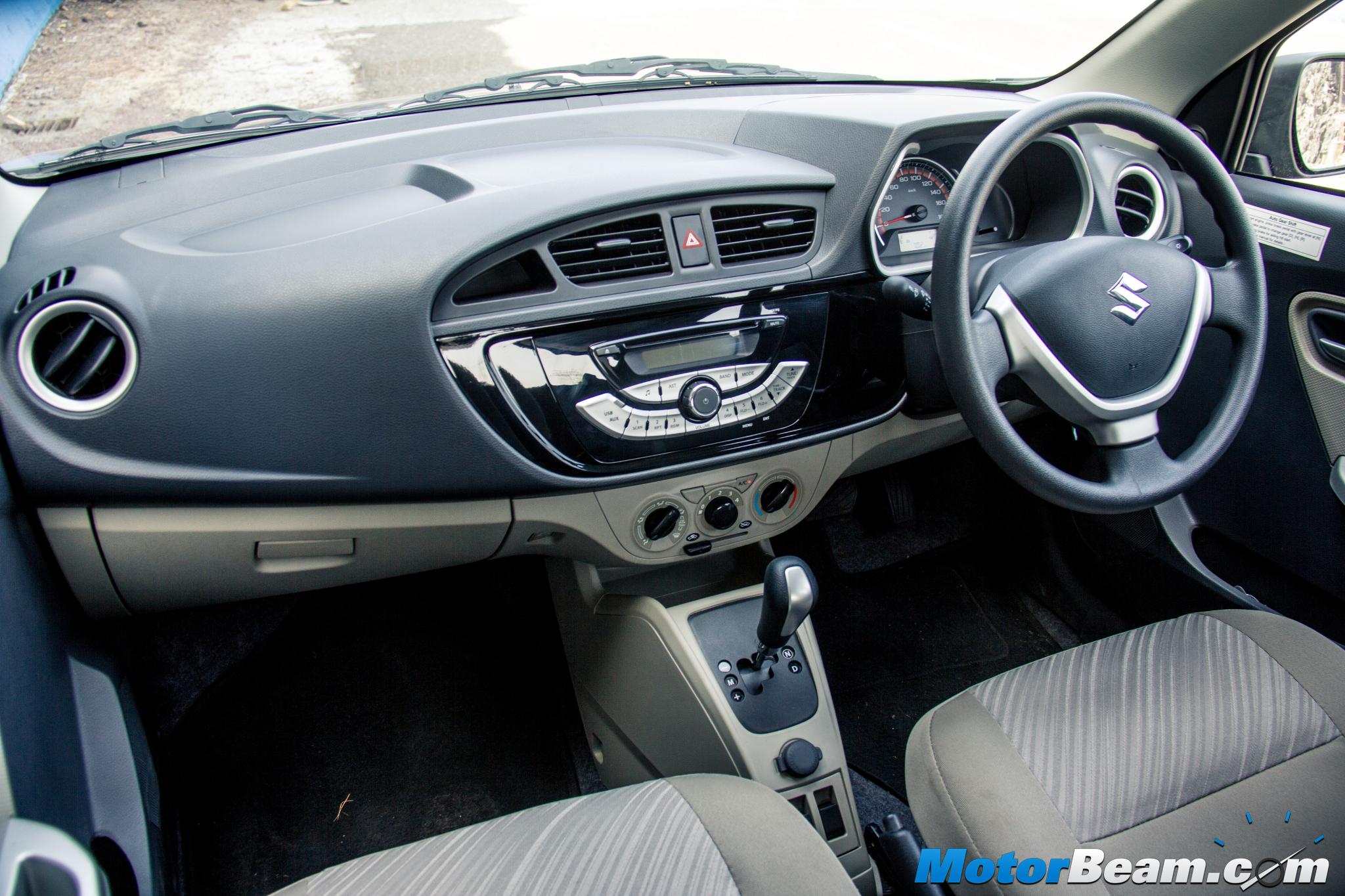
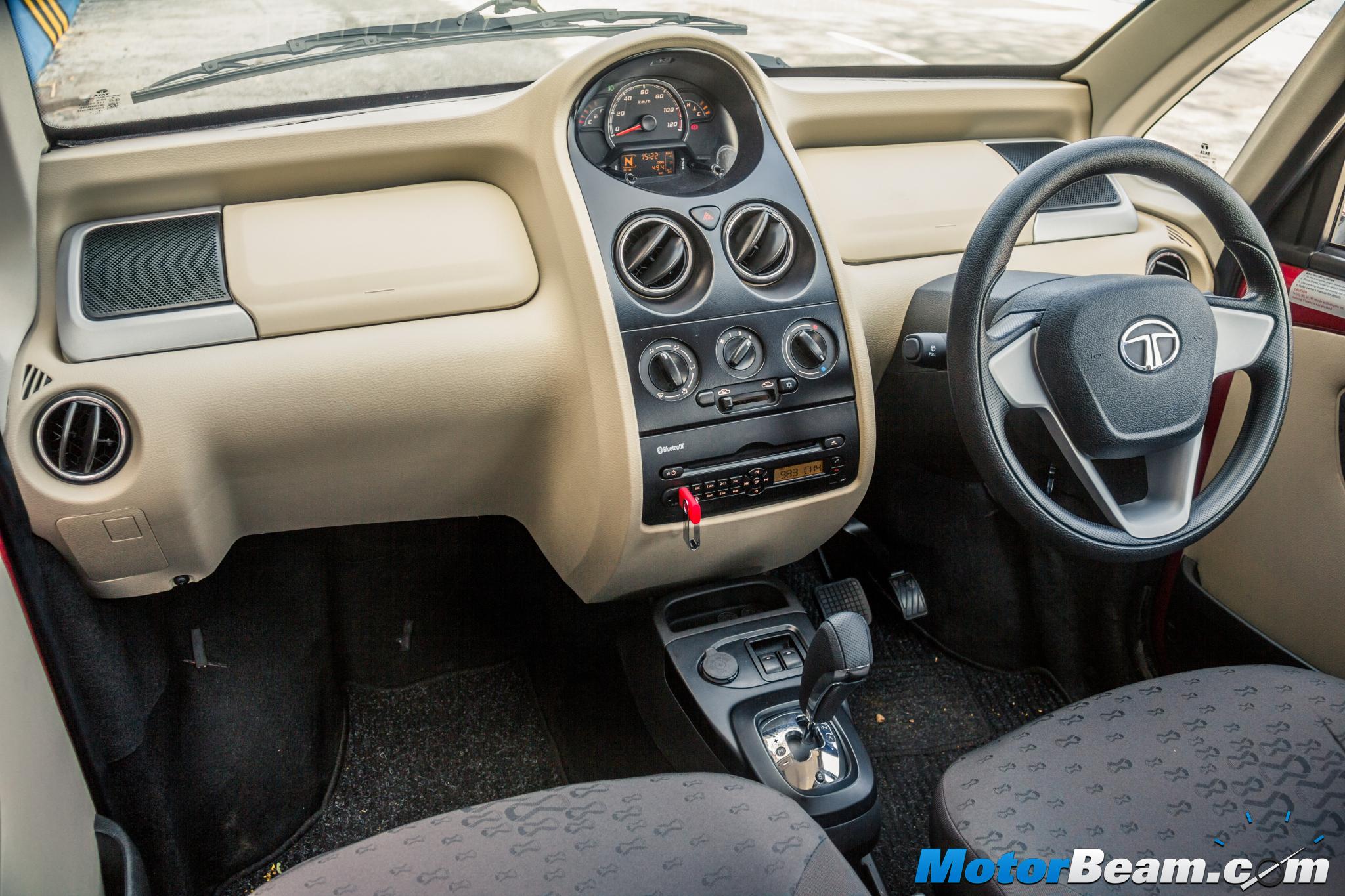
The Alto K10’s cabin looks better in both design and finish while the Nano’s interior keeps improving every year
Interiors – The Maruti Alto K10 being longer, also has the bigger wheelbase than the Tata Nano. But that doesn’t translate into more interior room because the Nano is by far the more spacious car of the two. Thanks to its height, there is ample headroom and legroom at the rear is far better than the Maruti too. Quality inside the cabin is good in both cars but slightly better in the Alto which also has a more appealing dashboard (we still don’t like the centrally mounted console on the Nano). Both these entry-level automatic hatchbacks are available in one trim only and get basic features like central locking, power steering, AC, audio system and front power windows (controls are placed in the centre, near the gear lever) as standard.
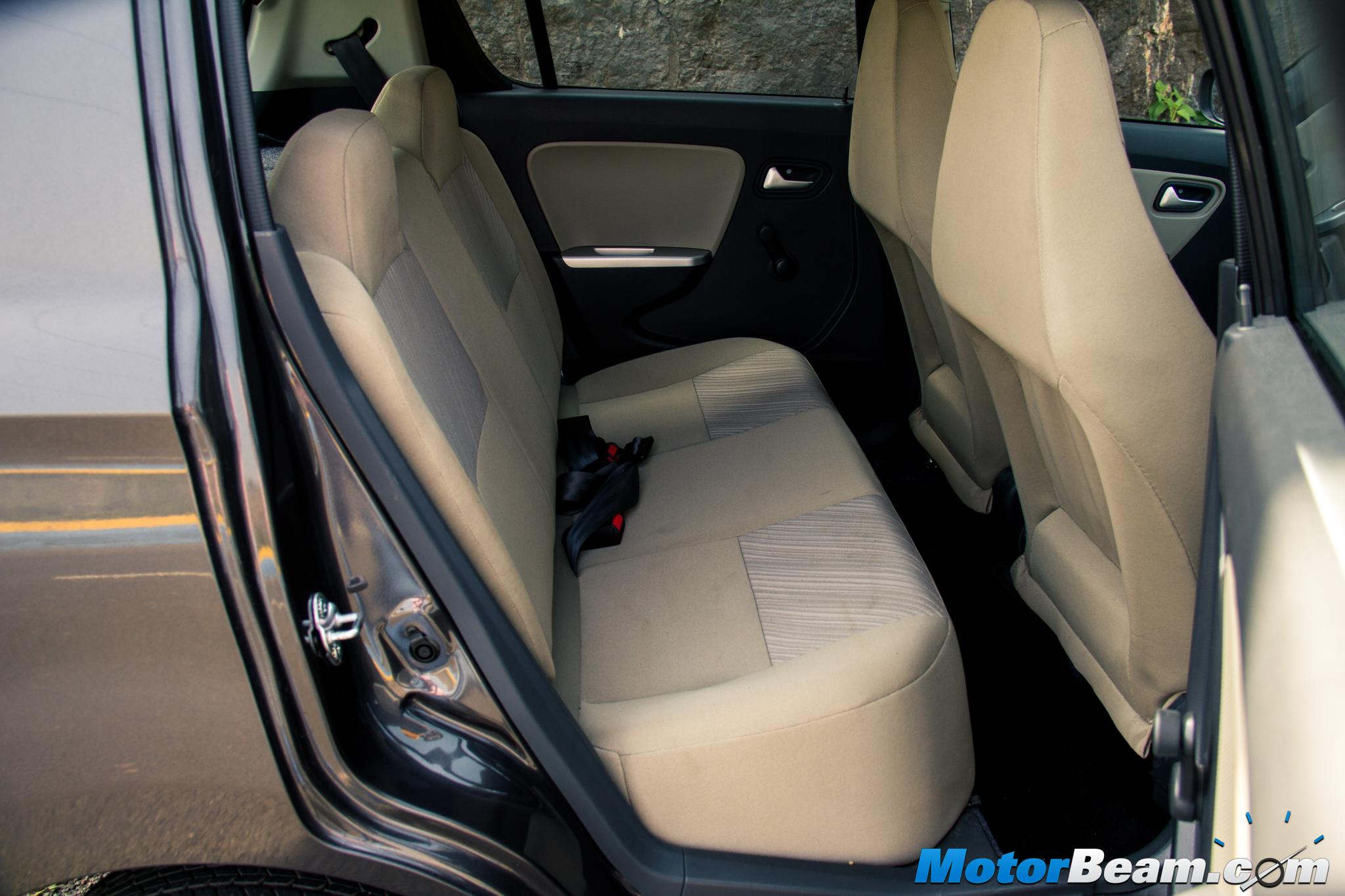
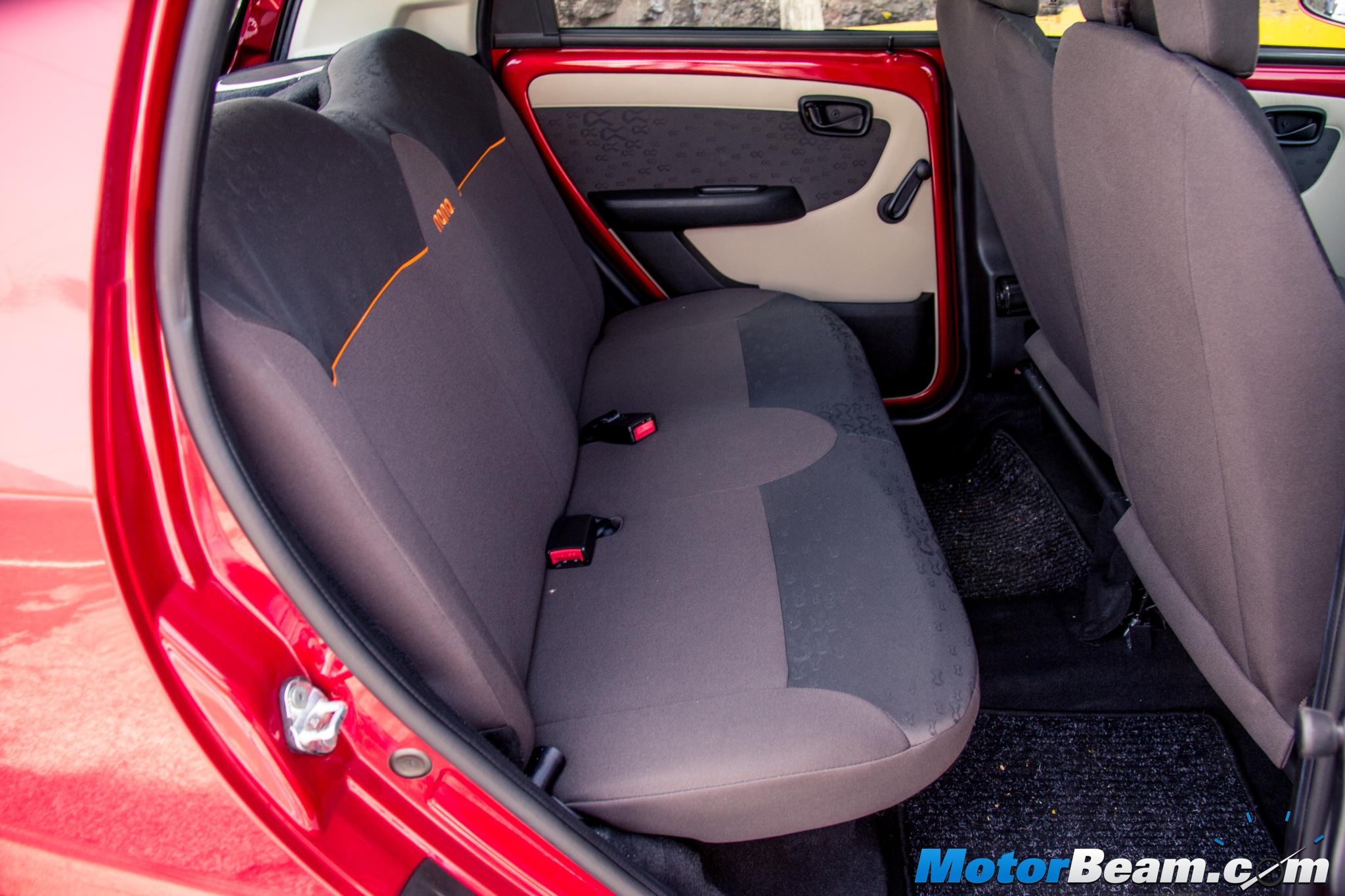
In spite of the longer wheelbase, the Alto doesn’t have as much interior room as the more spacious Nano
However, there are certain features on the Tata Nano which are absent on the Maruti Alto, like Bluetooth connectivity, keyless entry, multi-information display (with range and mileage indicator) and rear speakers (the Nano gets 4-speakers while the Alto gets 2!). The Nano doesn’t get internally adjustable rearview mirrors, tachometer while also missing out on three-point seat-belts for rear occupants, it uses lap belts while Maruti has given the Alto three-point seat belts for two out of the three seatbelts at the rear. The extra length of the Alto does help when it comes to boot space and since the Nano has the engine at the rear, it only has 94-litres of boot capacity while the Alto impresses with 177-litres (the Nano’s spare wheel is placed in the hood).
With more displacement and more output, the Alto K10 is 12 seconds faster to the ton
Performance – Till now, it appears to be quite close between both these cars but things take a drastic change when we talk performance because the Suzuki K10 mill in the Maruti Alto AGS (Auto Gear Shift aka AMT) is far superior to Tata Motors’ twin-pot mill. While the Nano has seen drastic improvement in NVH over the years, it can’t hold a candle to the Japanese aluminium mill. We firmly believe the Nano has ample performance for the city but drive an Alto K10 and you just feel the lack of horses in the Tata, the Nano feeling very underpowered.
The Nano lacks punch on inclines while the Alto K10 never feels underpowered
The Alto K10 is so quick, it makes the Nano feel lacking in comparison
Both cars also weigh quite the same but the Maruti Alto has more displacement (998cc against the Nano’s 624cc) and crucially though, it has an extra cylinder, 30 more horses and 39 Nm more torque. The Alto feels very fast in comparison and it simply picks up speed with no hesitation, you need not plan overtakes like you need to do while driving the Tata Nano. While the lack of ponies isn’t very evident in stop-go city driving, once you get to an open road, the Nano simply can’t keep up with the Alto K10. 0-100 km/hr comes up in 14.84 seconds on the Alto while the Nano takes a long 27 seconds for the same. Top speed of the Nano AMT is under 120 km/hr while the Alto will breeze past 160 km/hr without much effort. The Nano’s engine sounds coarse in comparison to the smooth motor in the Alto K10 and while both cars have some vibes, it’s more evident in the Tata vehicle.
AMT box on both cars is the same with minor differences, there is lag between shifts
The Nano is short geared while the Alto K10 is tall geared and both cars use the same 5-speed AMT unit (the lever on the Nano appearing premium thanks to the chrome touch) which has quite the lag between shifts. There is a big difference though as the Nano gets a Sports mode helping it to perform better while the Alto’s unit is tuned to not upshift in manual mode, making it a fun experience to drive this small car (the Nano upshifts as soon as it reaches redline). A big issue we faced with the Nano is the lack of punch to tackle inclines and we had to be very careful with the brakes and throttle to not roll back. Both cars get a creep function to make light work of stop-go driving. Tata has increased the tank on the Nano to 24-litres but that too pales in comparison to the Alto’s 35-litre tank. The Alto is also the more frugal car with an ARAI certified mileage of 24.07 km/l while the Nano automatic returns 21.9 km/l.
The Nano’s rear drive layout makes it fun but the Alto has the better handling
Driving Dynamics – The Tata Nano is a rear-wheel drive car while the Maruti Alto K10 is a front-wheel drive, thus the twin-cylinder engine equipped vehicle is more fun to drive as you can drift it a bit with the use of the handbrake. But it’s the Alto which offers better handling and stability, being much more composed than the tall Nano. The Nano also runs on smaller tyres and wheels which does affect its pot hole absorbing capability, the Alto outdoing the world’s most affordable car yet again, this time in the ride quality department.
Ride quality and braking on the Alto K10 is better than that on the Tata Nano
Where the Nano has a big advantage is the turning radius and ground clearance, it has a shorter turning radius helping one take u-turns in the smallest of places while the 20 mm higher ground clearance helps to stay clear of even the worst of speed-breakers without exercising any caution whatsoever. Neither cars have a feedback rich steering but somehow the Alto offers better high speed feedback while the Nano’s is lighter at low speeds for ease of city driving. Where the Nano disappoints big time is the brakes, it comes with all drum set-up while the Alto gets front discs, stopping power on the Nano is poor while the Alto K10 comes to a halt with good confidence.
Neither cars are safe but Maruti Suzuki offers the better service experience
Safety and After Sales Service – Neither of these cars come with either ABS or airbags (the Alto K10’s AGS variant is available in VXi trim while a driver side airbag is available on the manual VXi (O) trim). When the Alto and Nano were tested by Global NCAP, they gave both a 0-star safety rating, thus neither cars are safe. Maruti Suzuki’s sales and after-sales service is way superior to Tata Motors’, the Alto will also retain its value much better than the Nano in the used car market, resulting in the Suzuki vehicle having a better resale value.
Yes, the Alto K10 is ahead of the Nano simply because it’s the better car
Verdict – It is very evident here, the Maruti Alto K10 is much superior to the Tata Nano GenX and that too in multiple departments like performance, mileage, handling, braking, boot space, interior design, quality, service and resale. However, the Nano does offer more space and has certain features which are more than welcome on a car of its price. Although the Alto K10 is the better car, the Nano offers more bang for the buck. The GenX Nano is priced at Rs. 1.31 lakhs less than the Maruti, making it a tempting proposition for those who want an automatic hatchback. But that said, the Alto is our pick in this shootout as the premium you pay for it feels worth it.
The Tata Nano is an easy car to drive in the city, takes less space to park and is a joy to manoeuvre but the Maruti Alto K10 is the better car and although much more expensive, the extra you pay for it is justified.
Picture Editing: Sri Manikanta Achanta
Further Reading –
Maruti Alto K10 Review
Tata Nano GenX Review


